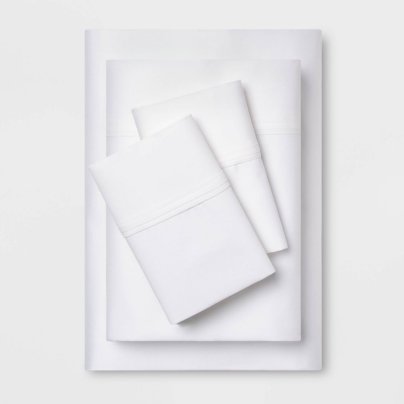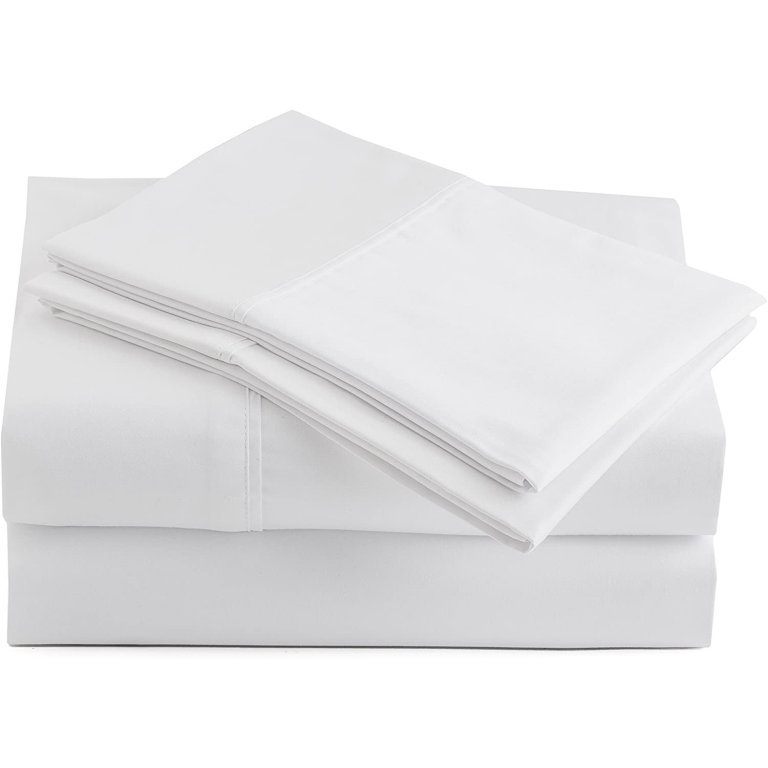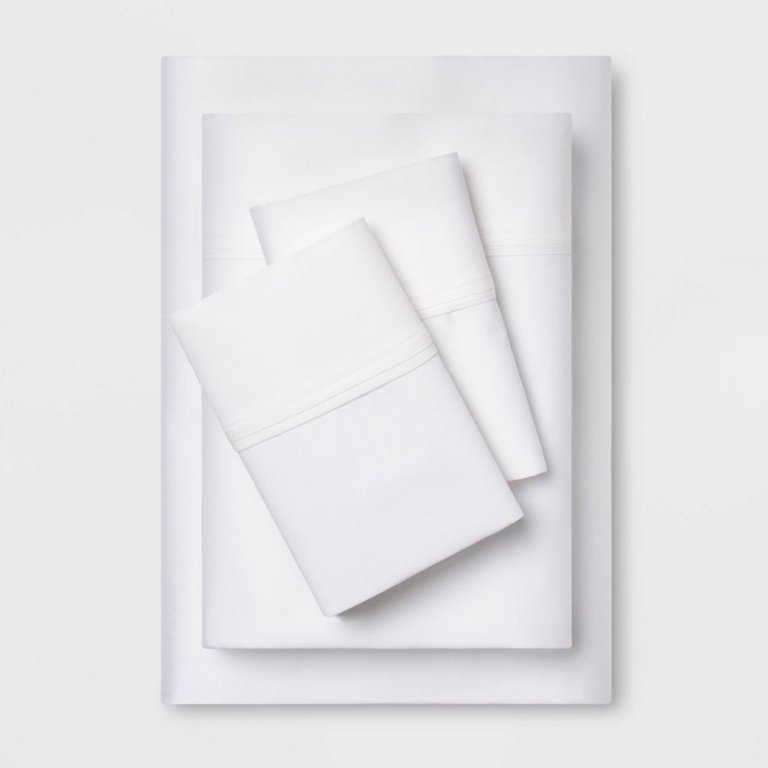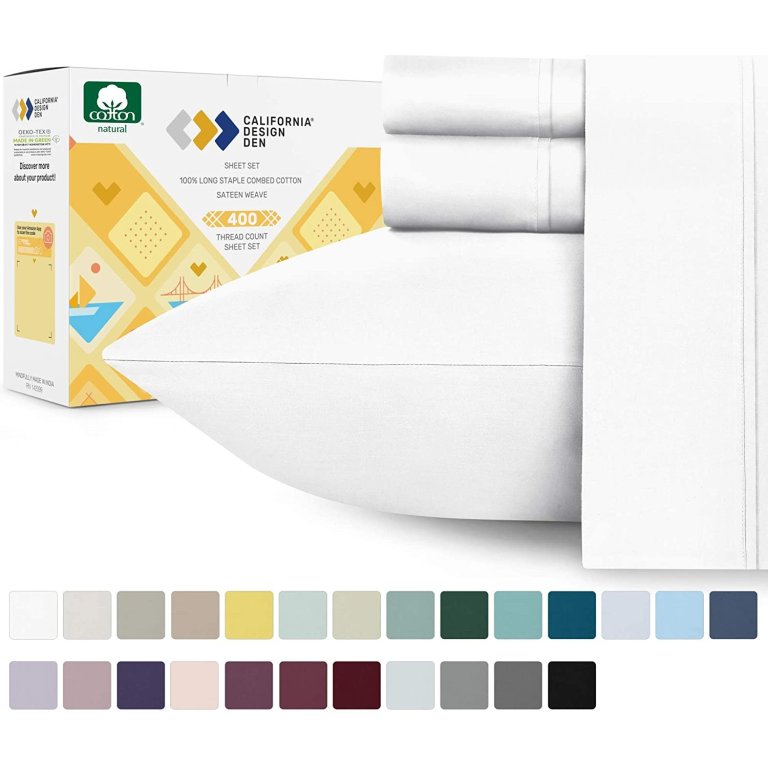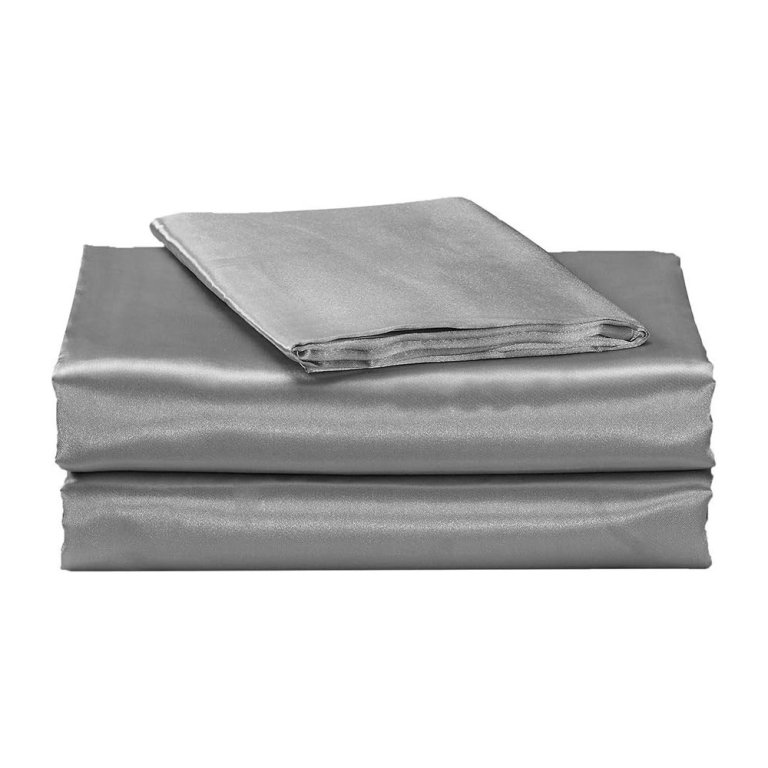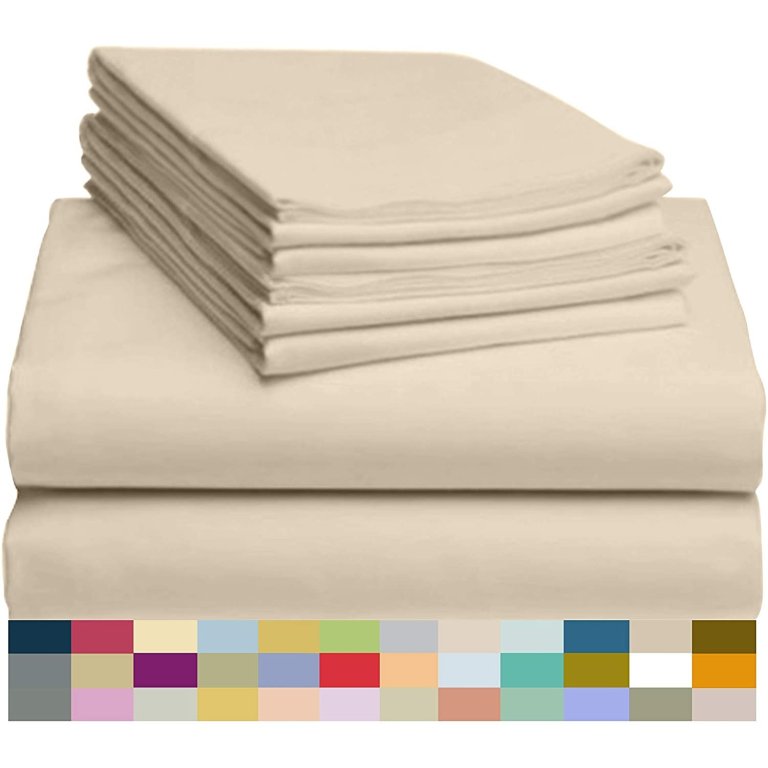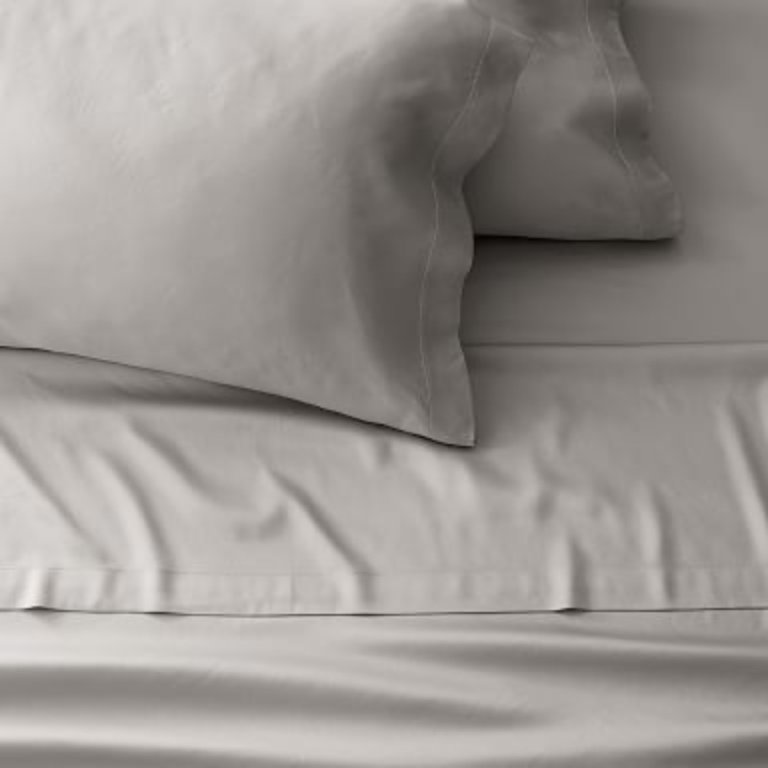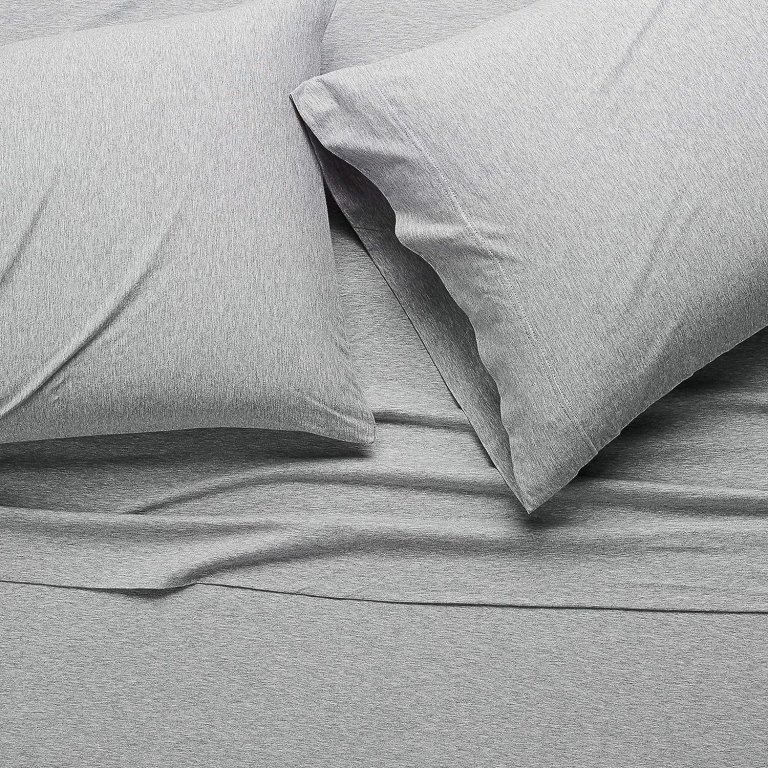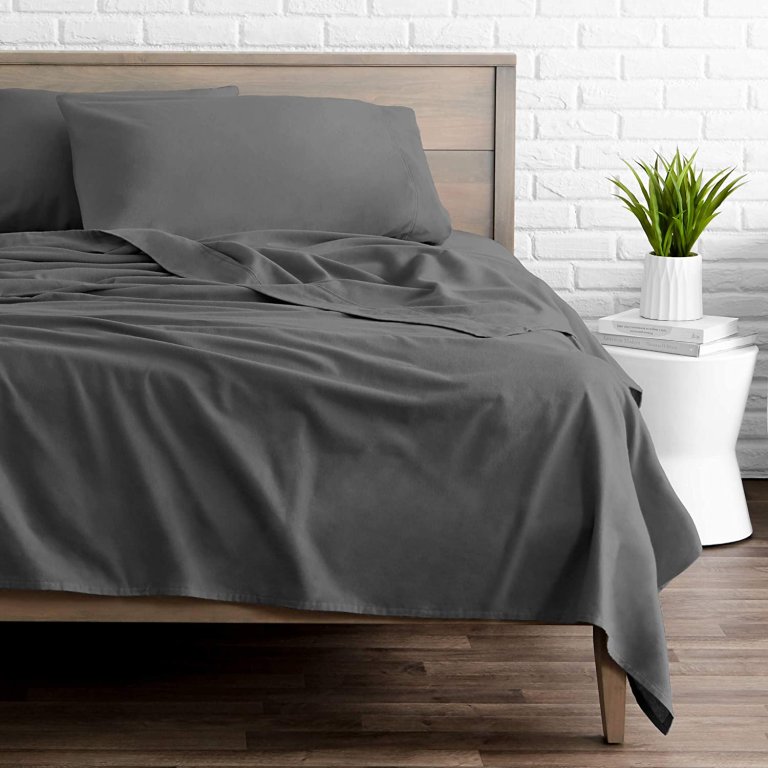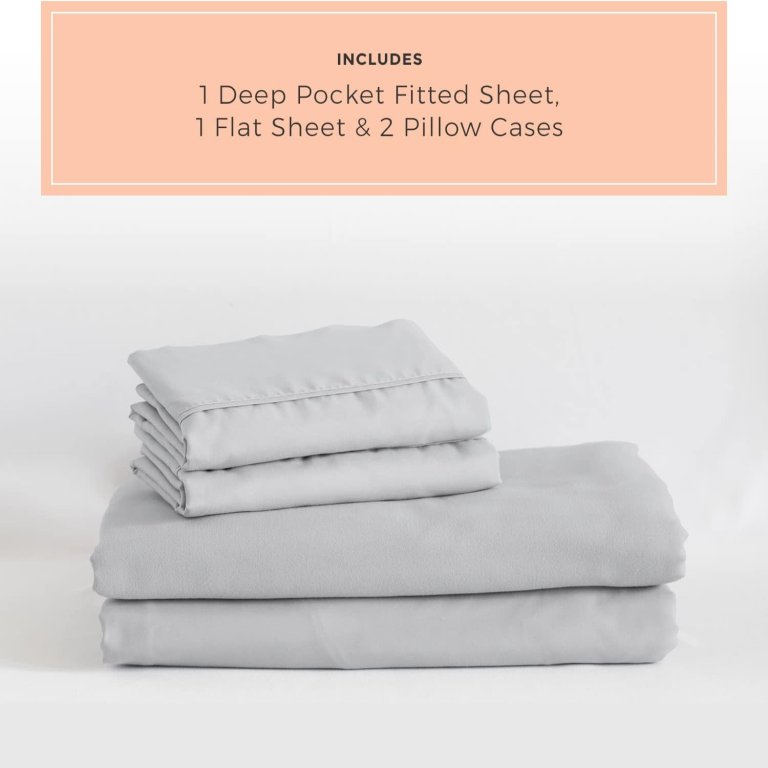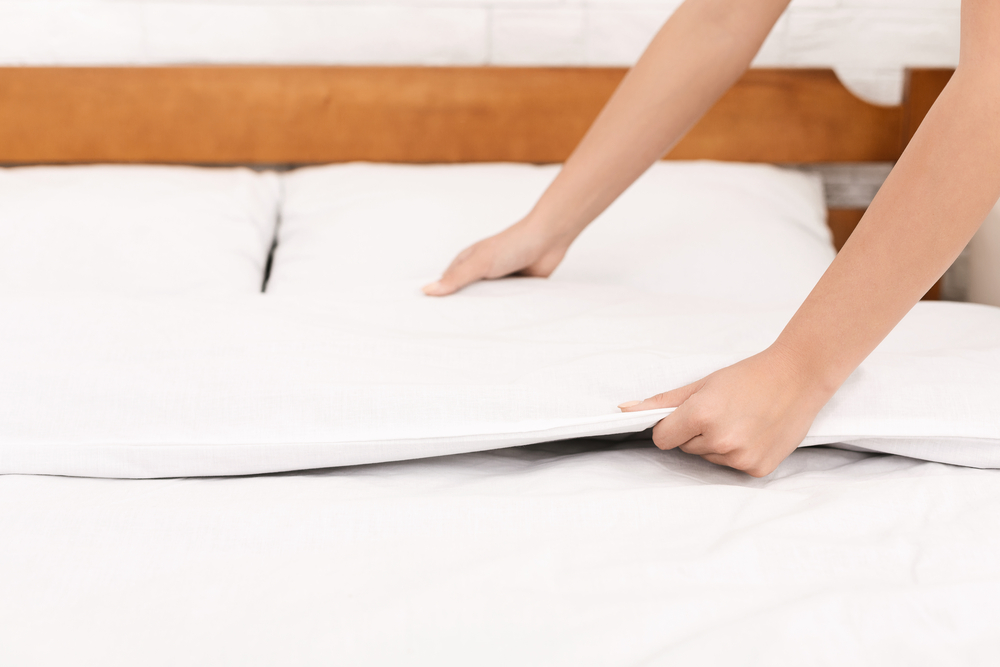
We may earn revenue from the products available on this page and participate in affiliate programs. Learn More ›
People spend nearly a third of their lives in bed, so quality sheets—a key component to a good night of sleep—are essential. Sheets provide a comfortable surface for the body while protecting the mattress, and today’s versions come in a host of different materials to suit a variety of sleepers’ preferences. All that choice, however, can make selecting the ideal sheets a challenge.
This guide will help those who aim to upgrade the bedroom with luxurious new sheets. Read on for detailed descriptions of today’s top options in a host of categories and check out important factors and features to keep in mind when shopping. Pleasant dreams!
- BEST OVERALL: Peru Pima 415 Thread Count Percale Sheets
- BEST BANG FOR THE BUCK: Threshold Performance 400 Thread Count Sheet Set
- BEST COTTON: California Design Den 400 Thread Count Cotton Sheets
- BEST SILK: Mk Home Soft Silky Satin Deep Pocket Sheet Set
- BEST LINEN: Dapu Pure Stonewashed Linen Sheets
- BEST BAMBOO: LuxClub Wrinkle-Free Bamboo Sheets
- BEST TENCEL: West Elm Silky Tencel Sheet Set
- BEST JERSEY: Amazon Basics Cotton Jersey Bed Sheet Set
- BEST MICROFIBER: Mellanni Brushed Microfiber Bed Sheet Set
- BEST FLANNEL: Bare Home Double-Brushed Flannel Sheet Set
- BEST COOLING: PeachSkinSheets Hot Sleepers/Night Sweats Sheets
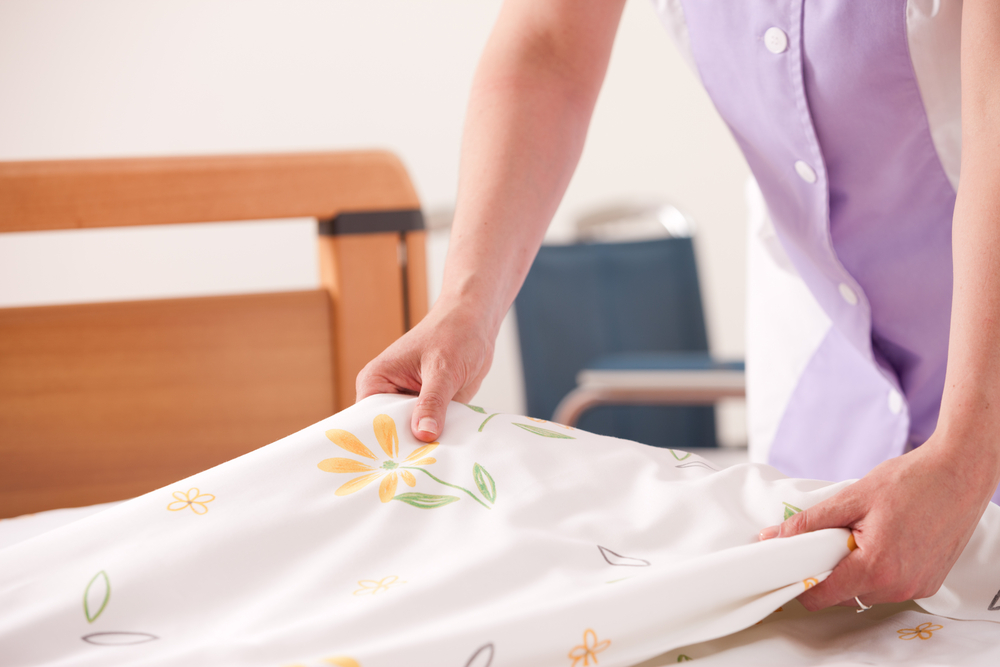
How We Chose the Best Bed Sheets
What’s totally comfortable for one person might not suit another, so we researched the most sought-after bed sheets in a broad range of categories. We discovered that the best products are defined not just by their fabric type but also by thread count, size, style, and other special features offered by top brands.
After extensive product research, we included sheet sets in our list of top picks made of cotton, silk, linen, bamboo, Tencel, jersey, microfiber, and flannel to satisfy both hot and cool sleepers. We included sheets with weaves such as percale and sateen for durability and also selected options with high thread counts—up to 1,500 in one case—to meet individual comfort preferences.
These sheet sets come in some standard size dimensions, such as crib, twin, twin XL, RV/short queen, full, queen, king, split king, California king, and California split king, for complete versatility. Plus, all of these sheets are available in at least ten colorways to complement bedroom decor.
In terms of special features, many of these sheet sets have Oeko-Tex certification (meaning they were tested for the presence of toxic chemicals); moisture-wicking capability; wrinkle-, pill-, and shrink-resistant constructions; and deep pockets for ease of use when making the bed.
Our Top Picks
Quality sleep is vital to a healthy, productive life. All the bed sheets in this lineup are among the best available, based on such factors as softness, durability, and brand reputation.
Best Overall
Peru Pima 415 Thread Count Percale Sheets
Pros
- Long-staple cotton sheets with a strong and long-lasting percale weave
- Soft, lightweight construction prevents excessive heat; suitable for couples
- Compatible for fitting mattress depth of up to 14.2 inches
- Comes in many sizes and colorways to suit different users’ preferences
Cons
- Some users have reported pilling and/or difficulties with sizing
Product Specs
- Type: Cotton
- Weave: Percale
- Thread count: 415
- Sizes available: Twin, twin XL, full, queen, king, and California king
- Colorways: 14
Pima cotton (also known as Egyptian cotton) is characterized by its high thread count and its “long-staple” fiber. These Peru Pima cotton sheets boast an impressively smooth yet strong weave. They’re made from 100 percent Peruvian Pima cotton and feature a 415 thread count that provides a luxurious feel.
The sheets also feature a percale weave, which is characterized by a matte finish and a crisp texture. Percale holds up well to multiple washings and should last for years with proper care. Peru Pima’s cotton sheets feel light and invigorating yet impressively soft and may offer ideal comfort for hot sleepers. They will fit mattress depths up to 14.2 inches and are available in several neutral colors.
Get the Peru Pima long-staple cotton bed sheets at Amazon.
Best Bang For The Buck
Threshold Performance 400 Thread Count Sheet Set
Pros
- Suitable for use in guest rooms, childrens’ bedrooms, and on pull-out beds
- Lightweight cotton sheets with sateen weave; can be used in summer or winter months
- Quality fabric resists wrinkles, pills, and shrinkage for long-lasting wear
- Fits mattresses up to 18 inches deep with labels on the top and bottom for ease of use when making the bed
Cons
- May take up a lot of space when in the washing machine
Product Specs
- Type: Cotton
- Weave: Sateen
- Thread count: 400
- Sizes available: Twin, twin XL, full, queen, king, and California king
- Colorways: 12
Quality sheets for childrens’ bedrooms or guest spaces are an affordable luxury with Threshold Performance 400-thread-count sheets. These 100 percent cotton sheets have a sateen weave for durability, are breathable enough for warm-weather comfort, and have been Oeko-Tex certified for safety. They also resist pesky pilling, wrinkling, and shrinking, so they’ll last, wash after wash, saving money in the long run.
Extra-deep pockets allow these sheets to easily fit mattresses of up to 18 inches deep. Plus, this set has a label on either end reading “top” and “bottom” for less hassle while making the bed.
Get the Threshold Performance bed sheets at Target.
Best Cotton
California Design Den 400 Thread Count Cotton Sheets
Pros
- Made with long-staple cotton fiber and a sateen weave; completely eco-friendly materials
- Fits mattresses up to 16 inches deep for versatility
- Comes in more sizes and colorways than most options in our lineup
Cons
- Some hot sleepers may find them too heavy for use in summer months
Product Specs
- Type: Cotton
- Weave: Sateen
- Thread count: 400
- Sizes available: Twin, twin XL, full, queen, king, king split size, and California king
- Colorways: 32
Cotton sheets are prized for their versatility and durability, and this set from California Design Den is a prime example of these qualities. The 400-thread-count 100 percent cotton sheets are made with long-staple cotton fiber for a luxurious sateen weave. Another big plus: They’re available in the somewhat hard-to-find sizes such as twin XL and California king, and fit mattresses up to 16 inches deep.
Eco-friendly and containing no trace chemicals, these cotton sheets come in a wide range of colors and patterns to suit many decor schemes. Plus, they’re fade-resistant, so the color will last over multiple washings.
Get the California Design Den bed sheets at Amazon or Target.
Best Silk
Mk Home Soft Silky Satin Deep Pocket Sheet Set
Pros
- Smooth and soft material feels like real silk without the high price tag
- Comes in multiple sizes and 22 colorways to match any room’s current linens
- Suitable for use in summer months due to the lightweight material
Cons
- Not made of 100 percent silk
- Too lightweight for use in the winter; not thick or insulating
Product Specs
- Type: Silk satin
- Weave: Polyester
- Thread count: 180
- Sizes available: Twin, twin XL, full, queen, king, and California king
- Colorways: 22
Genuine silk sheets can be very expensive, and some are also too delicate for machine washing. The solution for those who savor silk may be this affordable set from Mk Home. Made with polyester and satin, these sheets retain their smooth, soft feel, wash after wash.
Plus, they’re so lightweight, they feel silky but not sticky, so they can be a pleasure to sleep on even in very hot climates. Don’t be fooled into thinking the 180-thread count means low quality; thread count alone does not determine quality, especially when it comes to thin, silky soft sheets like these. This top pick comes in multiple sizes and over 20 colorways to suit bedroom decor.
Get the Mk Home bed sheets at Amazon.
Best Linen
Dapu Pure Stonewashed Linen Sheets
Pros
- Material is naturally antibacterial, hypoallergenic, and breathable
- Stonewashed linen is extremely durable yet soft; double-stitched design for long-term use
- Can absorb 20 percent of its weight in moisture; suitable for hot climates
- Can be used in both the summer and winter months
Cons
- Comes in fewer sizes than other options on this list
- No weave material listed; may not provide ample durability with frequent washing
Product Specs
- Type: Linen
- Weave: Not listed
- Thread count: 160
- Sizes available: Twin, full, queen, and king
- Colorways: 13
An ancient fabric made from the flax plant, linen is both durable and luxurious—as in this set of Dapu’s linen sheets. Linen also boasts natural antibacterial, hypoallergenic, and breathable qualities. And, unlike some linen sheets, which can feel stiff and rough when new, Dapu’s are stonewashed, so they feel soft right out of the package.
Despite the tight weave, these sheets are refreshingly breathable: Pure linen can absorb up to 20 percent of its weight in moisture before beginning to feel damp, a quality that warms slumberers in the winter and cools them in summer.
Though on the pricey side, linen sheets will last for years if cared for properly. The fabric lacks elasticity and wrinkles easily, adding an intentional lived-in look that many people love.
Get the Dapu linen sheets at Amazon.
Best Bamboo
LuxClub Wrinkle-Free Bamboo Sheets
Pros
- Sustainable and environmentally conscious bamboo construction; feels like a mix of cotton and linen
- Soft, hypoallergenic, and moisture-wicking construction; suitable for summer and winter months
- Deep pockets for mattresses of up to 18 inches deep for versatility
- Comes in many colorways to match a variety of decor schemes
Cons
- No weave material listed; may not be as durable as some comparable options
Product Specs
- Type: Bamboo
- Weave: Not listed
- Thread count: Not listed
- Sizes available: Twin, twin XL, full, queen, king, king split size, and California king
- Colorways: 35
Made from fast-growing bamboo, this LuxClub six-piece bamboo sheet set is a sustainable choice for environmentally conscious shoppers. The texture and quality of bamboo fabric resembles a cross between cotton and linen: soft as cotton and naturally hypoallergenic and absorbent like linen. It also keeps sleepers cool in summer and warm in winter.
LuxClub’s sheets feature deep pockets that fit mattresses up to 18 inches thick. Unlike most sheet sets, this option includes four pillowcases. These sheets are available in a wide spectrum of colors and sizes, including twin XL and California king.
Get the LuxClub bed sheets at Amazon or Target.
Best Tencel
West Elm Silky Tencel Sheet Set
Pros
- Extremely moisture-wicking and temperature-regulating; suitable for hot sleepers
- Wrinkle-free, smooth, and lightweight for long-term use in summer or winter
- Natural sheen provides a touch of elegance to the bed linens
- Fair Trade certification; made in a staff-friendly factory
Cons
- No weave material listed; may not be ideal for some users’ preferences
Product Specs
- Type: Tencel
- Weave: Not listed
- Thread count: 320
- Sizes available: Full, queen, king, and California king
- Colorways: 10
A relatively new fiber for residential sheet sets, Tencel is naturally and sustainably sourced from wood pulp to make a soft, breathable, and eco-friendly fabric that’s gaining popularity. These West Elm sheets excel for their moisture-wicking, cooling capabilities and so are recommended for hot or sweaty sleepers.
These sheets are wrinkle-free, wash after wash, for a clean, smooth look and feel. They also boast a natural sheen that’s sleek and inviting. The sheets have a 320 thread count, a Fair Trade certification, and fit mattresses of up to 16 inches deep.
Get the West Elm bed sheets at West Elm.
Best Jersey
Amazon Basics Cotton Jersey Bed Sheet Set
Pros
- Jersey-and-cotton blend is thick enough for winter months but thin enough for summer heat
- Comes with an Oeko-Tex and Climate Pledge certification for eco-friendliness
- Affordable compared to other options currently available
Cons
- Some colors may not look the same in real life as on the Amazon site
- No weave type listed; may not be ideal for some users’ preferences
Product Specs
- Type: Jersey
- Weave: Not listed
- Thread count: 171
- Sizes available: Crib, twin, twin XL, full, queen, and king
- Colorways: 11
Those looking for affordable, warm sheets can rely on this Amazon Basics cotton jersey sheet set. The thick and cozy cotton-and-jersey blend sheets are perfect for winter use. A quilted version is available for even more cold-weather cuddliness.
These sheets boast Oeko-Tex certification for safety and a Climate Pledge certification for eco-friendliness and reliability. On the downside, the thread count of 171 isn’t the most luxurious, and the sheets only fit mattresses up to 14 inches deep. However, they do come in the perfect size for a crib to keep small fry nice and snug.
Get the Amazon Basics bed sheets at Amazon.
Best Microfiber
Mellanni Brushed Microfiber Bed Sheet Set
Pros
- Fade- and wrinkle-resistant; suitable for frequent or heavy-duty use
- Ideal for spare bedrooms, dorm rooms, childrens’ bedrooms, Murphy beds, and pull-out beds
- Comes in more sizes and colorways than any other option on this list
Cons
- May become staticy in the winter months
- No weave type listed; may not be ideal for some users’ preferences
Product Specs
- Type: Microfiber
- Weave: Not listed
- Thread count: 95 GSM
- Sizes available: Twin, twin XL, RV/short queen, full, queen, king, California king, and split king (all also come in an extra-deep pocket size)
- Colorways: 40
Easy to care for and inexpensive, Mellanni’s soft-brushed microfiber sheets are great for folks who don’t like to fuss. They’re fade- and wrinkle-resistant, durable, and maintain their bright color after multiple washes. They’d be ideal for college students who live in a dorm or for a guest room.
They come in a huge selection of colors and sizes, and a deep-pocket option is available, too. As for the softness, these sheets have a thread count of 95 grams per square millimeter (GSM), the measurement used for microfiber, making them luxurious to the touch. The only downside worth reporting is that the sheets do tend to get staticky, especially in the winter months.
Get the Mellani microfiber sheets at Amazon.
Best Flannel
Bare Home Double-Brushed Flannel Sheet Set
Pros
- Made with finely brushed cotton fibers for a slight fuzzy texture; perfect for winter months
- Double-brushed flannel material is heavy and cozy for optimal warmth and comfort
- Comes in multiple rich, solid colors to match many bedroom decor schemes
Cons
- Not suitable for hot sleepers
- Some users have reported that these sheets can fit a little large on mattresses
Product Specs
- Type: Flannel
- Weave: Turkish cotton
- Thread count: 300
- Sizes available: Twin, twin XL, full, full XL, queen, king, split king, California king, and California king split
- Colorways: 17
This Bare Home flannel sheet set is made of cotton fibers that are finely brushed for maximum softness and plushness—the reason flannel is also known as brushed cotton. This process gives the fabric a fuzzy-fleecy feel that many folks find cozily appealing, especially in winter.
Bare Home’s double-brushed flannel sheets are heavy and feature a dense weave for optimal warmth. They come in rich, solid colors and at a modest price. These sheets are warm, so they are not ideal for hotter climates or for summer use, but when it comes to snuggle seasons, they can make a bedroom super cozy.
Get the Bare Home flannel sheets at Amazon or Target.
Best Cooling
PeachSkinSheets Hot Sleepers/Night Sweats Sheets
Pros
- Material is moisture-wicking, provides airflow, and dries ultrafast
- Wrinkle-, pilling-, and fade-resistant; looks like new, wash after wash
- Lightweight construction is ideal for the hottest of sleepers or couples
Cons
- May not be as durable as other options on the market
Product Specs
- Type: Microfiber
- Weave: Not listed
- Thread count: 1,500 (90 GSM)
- Sizes available: Twin, twin XL, full, full XL, queen, king, split king, split head king, and California king
- Colorways: 24
Hot sleepers can wake up sweaty in some sheets, but this PeachSkinSheets set may be the solution. The innovative microfiber sheets help manage wetness three ways—with moisture-wicking, airflow, and the ability to dry ultrafast so body heat won’t negatively impact sleep.
The durable microfiber sheets resist wrinkling, pilling, and fading while remaining comfortably soft. They’re available in a variety of colors and sizes, and while on the pricey side for microfiber, they’re moisture-wicking properties can be a huge boon to folks who sleep hot.
Get the PeachSkinSheets bed sheets at Amazon.
Jump to Our Top Picks
What to Look for When Choosing Bed Sheets
When it comes to buying sheets, personal preference reigns. However, to get the most out of your money, consider fabric strength, washability, fit, and more. Sheets should also complement room decor. Here are some vital factors and features to keep in mind while shopping for the best bed sheets for your bedroom.
Size and Fit
Measure your mattress to ensure that sheets will fit. Mattress sizes can vary, even though there are standard dimensions. The biggest variations occur in thickness, or depth, and not all sheets, especially fitted sheets, will fit all mattresses adequately.
Although most sheets are made to fit mattress length and width sizes, there’s a difference between standard-pocket and deep-pocket sheets. Standard-pocket sheets will fit mattresses up to 12 inches high or deep. Deep-pocket sheets are designed for mattresses 15 inches high. If you have a super-plush top mattress, you might need to get extra-deep pocket sheets that are made for mattresses 16 to 22 inches high.
Overall, these are the sizes that are made by most manufacturers:
- Twin: 75 inches long by 38 inches wide
- Twin XL: 80 inches long by 38 inches wide
- Full: 75 inches long by 53 inches wide
- Queen: 80 inches long by 60 inches wide
- King: 80 inches long by 76 inches wide
- California king: 84 inches long by 72 inches wide
Split king mattresses, which are the same size as king mattresses, but split into two, are less common.
Fiber Content
The fiber content in a sheet affects its durability and softness. Some of the top fibers used in sheets are cotton, microfiber, silk, Tencel, polyester, linen, and bamboo. Many people prefer cotton because of the sheets’ comfort and variety. However, other fibers have their pros and cons.
- Cotton sheets are breathable and cool, hypoallergenic, natural, and can vary when it comes to texture; but they can also have high price tags.
- Microfiber sheets are lightweight, durable, inexpensive, but they can trap heat, stain more easily, and be more prone to static.
- Silk sheets feel extremely soft and are naturally hypoallergenic, but they are expensive and typically not machine washable.
- Tencel sheets absorb moisture extremely well but are not 100 percent hypoallergenic.
- Polyester sheets cost less and are durable as well as stain- and wrinkle-resistant, but are nonabsorbent and trap heat.
- Linen sheets are durable and, while stiff at first, become more comfortable over time. They also wrinkle easily, but some folks like that lived-in look.
- Bamboo sheets are soft and silky, durable, and breathable but are not made with 100 percent natural materials due to the chemicals used to process the bamboo fibers.
- Jersey sheets are made of knit cotton or cotton-blend fibers that are the same as the fabric in 100 percent cotton T-shirts.
Weave
The weave in sheets refers to how tightly or loosely the threads interlace to form the fabric. There isn’t a number associated with weave the way there is with thread count. Category names define weave levels and refer to the number of threads in the weft and warp of the fabric. Common weave types include:
- Flannel: A tight-weave medium-to-heavy-weight fabric made from 100 percent cotton.
- Percale: A lightweight weave made from both combed and carded cotton yarns.
- Sateen: A type of weave with a smooth, lustrous finish that resembles satin.
- Satin: A weave with a silky-smooth finish made from synthetic materials.
- Microfiber: Features a tight weave with an ultrasoft finish.
Thread Count
A sheet’s thread count is the number of horizontal and vertical threads contained in 1 square inch of fabric. In general, the higher the thread count, the softer the sheet. However, thread count alone doesn’t affect the sheet’s softness and durability.
Thread count can range from 50 (inexpensive sheets) to 1,000 or more (more expensive luxury sheets). As the thread count rises, the sheets become more fragile and prone to rips and snags. In general, stick with thread counts between 400 and 600. Fabric in this range feels comfortable against your skin and your wallet.
Temperature Control
Weave and fiber content affect a sheet’s breathability. In general, 100 percent cotton sheets are the most breathable natural option. Bamboo and silk also help sleepers stay cool. There are synthetic material sheets designed to help regulate body temperature during sleep. These sheets wick away moisture to keep sleeping bodies cool and refreshed.
For those who want warmer sheets for the winter months, tighter-weave sheets like flannel and microfiber are good picks.
The Advantages of Owning the Best Bed Sheets
Sheets, like mattresses, contribute to the quality of sleep. They protect mattresses, duvets, and pillows from dirt and moisture. They also add a decorative touch to the bedroom. So, it makes sense to invest in a set or two that will last.
There are many types of sheets from which to choose based on their fiber content, weave, thread count, and color. Prices can vary depending on features. The best bed sheets will have these three benefits:
- They help you get quality sleep by keeping you cool or warm.
- They will protect your mattress and other linens from moisture and dirt.
- They enhance the look of your bedroom decor.

